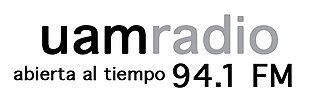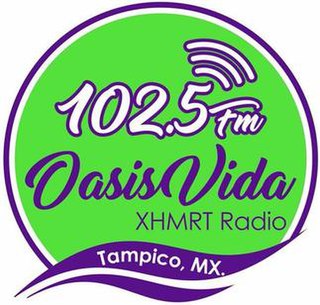At the most basic level, Personal Communications Service (PCS) describes a set of communications capabilities which allows some combination of terminal mobility, personal mobility, and service profile management. More specifically, PCS refers to any of several types of wireless voice or wireless data communications systems, typically incorporating digital technology, providing services similar to advanced cellular mobile or paging services. In addition, PCS can also be used to provide other wireless communications services, including services which allow people to place and receive communications while away from their home or office, as well as wireless communications to homes, office buildings and other fixed havelocations. Described in more commercial terms, PCS is a generation of wireless-phone technology that combines a range of features and services surpassing those available in analog- and digital-cellular phone systems, providing a user with an all-in-one wireless phone, paging, messaging, and data service.

The Communications Act of 1934 is a United States federal law signed by President Franklin D. Roosevelt on June 19, 1934 and codified as Chapter 5 of Title 47 of the United States Code, 47 U.S.C. § 151 et seq. The Act replaced the Federal Radio Commission with the Federal Communications Commission (FCC). It also transferred regulation of interstate telephone services from the Interstate Commerce Commission to the FCC.

The Telecommunications policy in the US is a framework of law directed by government and the Regulatory Commissions, most notably the Federal Communications Commission. Two landmark acts prevail today, the Communications Act of 1934 and the Telecommunications Act of 1996. The latter was intended to revise the first act and specifically to foster competition in the telecommunications industry.
The term non-commercial educational (NCE) applies to a radio station or TV station that does not accept on-air advertisements, as defined in the United States by the Federal Communications Commission (FCC). NCE stations do not pay broadcast license fees for their non-profit uses of the radio spectrum. Stations which are almost always operated as NCE include public broadcasting, community radio, and college radio, as well as many religious broadcasting stations.
Radio spectrum pollution is the straying of waves in the radio and electromagnetic spectrums outside their allocations that cause problems for some activities. It is of particular concern to radio astronomers.

The Communications Authority is a statutory body responsible for licensing and regulating the broadcasting and telecommunications industries in Hong Kong. It was formed in 2012 through a merger of the Hong Kong Broadcasting Authority, Television and Entertainment Licensing Authority, and the Telecommunications Authority. The organisation is authorized to investigate complaints made regarding programmes, issue warnings and fines, or even suspend the license of the radio or television station.

CTIA is a trade association representing the wireless communications industry in the United States. The association was established in 1984 and is headquartered in Washington, D.C. It is a 501(c)(6) nonprofit membership organization, and represents wireless carriers and suppliers, and manufacturers and providers of wireless products and services.
Javier Lozano Alarcón is a Mexican politician who served Secretary of Labor in the cabinet of President Felipe Calderón. He was elected as a senator to the LXII Legislature of the Mexican Congress, representing Puebla. He then resigned from the PAN and is currently working in the campaign of presidential candidate José Antonio Meade Kuribreña.
The National Exchange Carrier Association is a not-for-profit association created in 1984 by the Federal Communications Commission to administer the fees that long distance companies pay to access local telephone networks in the United States. Through the Federal Communications Commission’s access charge plan, NECA helps ensure telecommunications and broadband services remain available and affordable in all parts of the country, especially areas served by small rural telecommunications companies.

The Internet in the United States grew out of the ARPANET, a network sponsored by the Advanced Research Projects Agency of the U.S. Department of Defense during the 1960s. The Internet in the United States in turn provided the foundation for the worldwide Internet of today.
The Canal de Televisión del Congreso de los Estados Unidos Mexicanos, shortened to Canal del Congreso, is a television channel in Mexico that broadcasts the sessions of both houses of the Congress of the Union. It is available on all Mexican cable and satellite systems, as well as over-the-air in Mexico City on digital television station XHHCU-TDT channel 45.
In broadcast engineering, the reference distance is the distance which, under normal circumstances and flat terrain, a radio station would reach with a particular level of signal strength. This distance depends on two factors: effective radiated power (ERP) and height above average terrain (HAAT). The actual distance a station's signal travels depends highly on weather, where factors like temperature inversions and heavy precipitation have a strong and highly variable influence on radio propagation. However, for purposes of broadcast law such as construction permits and broadcast licenses, fixed calculations called propagation curves are applied to determine the reference distances for all existing and proposed stations. These also take into account beam tilt, carrier frequency, and even the Earth's curvature at longer distances.

XHUAM-FM, known as UAM Radio, is the radio station of the Universidad Autónoma Metropolitana, established in 2011.
XHTYL-FM is a community radio station serving Monterrey, Nuevo León. It broadcasts with 600 watts of power on 98.5 MHz and is known as Radio Tierra y Libertad. XHTYL is a member of AMARC México.
XHNEZ-FM is a community radio station broadcasting to Ciudad Nezahualcóyotl, State of Mexico on 97.3 FM. It is known as En Neza Radio and owned and operated by concessionaire Voces Urbanas, Movimiento Alternativo de Información Social.

XHMRT-FM is a radio station on 102.5 FM in Tampico, Tamaulipas. XHMRT-FM is owned by Martha Morales Resendiz and carries a Christian talk format known as "Radio Oasis Vida".









